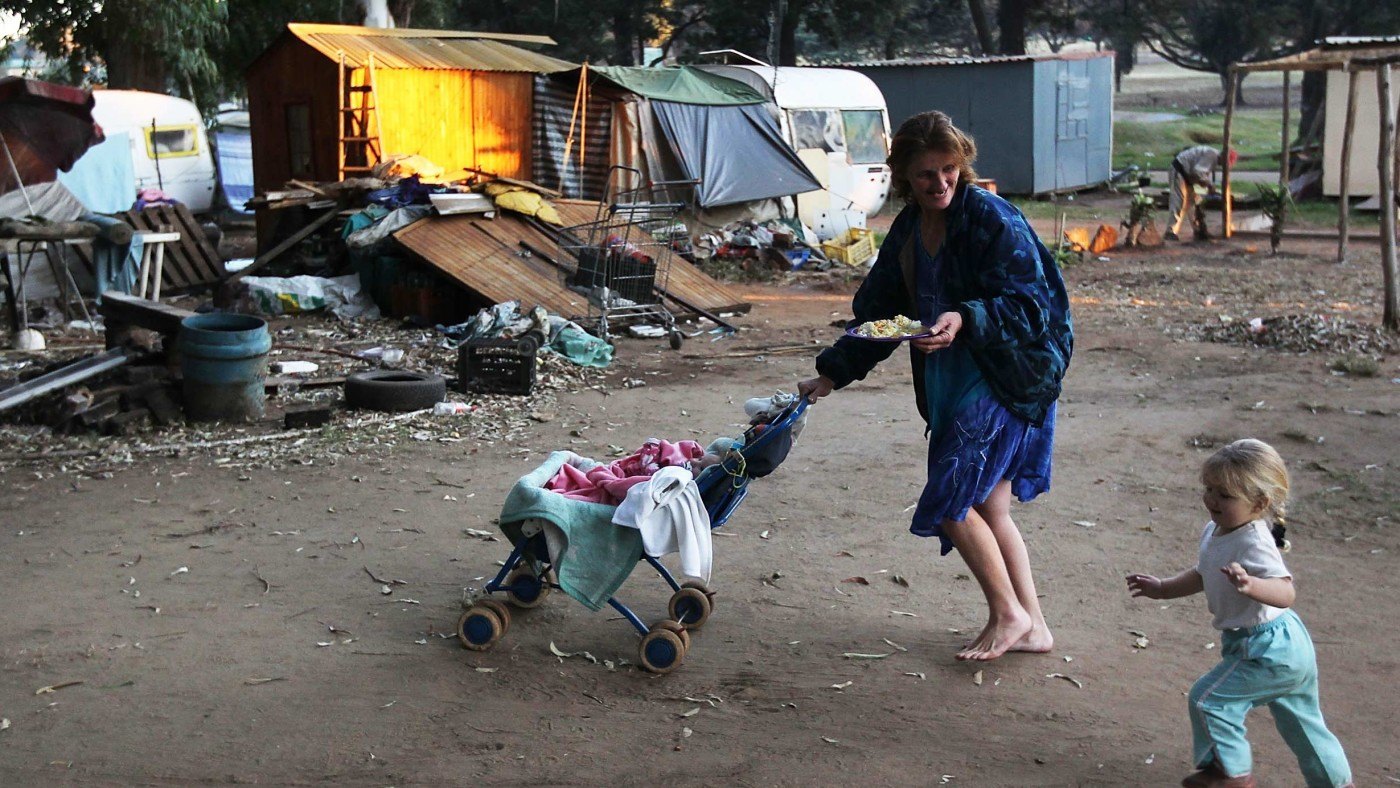The first time I encountered the term “poor whites,” I was taking a history class in a South African high school. The term referred to whites, mostly Afrikaners, who were losing their jobs to black competition at the turn of the 19th century. The whites had a vote. The blacks did not. As a result, the government of the day decided to solve the problem of white poverty by implementing a “color bar,” or job protection for whites. Over time, the color bar grew into a complex system of social and economic planning called apartheid. The system caused untold damage to black South Africans, but it also harmed the Afrikaners. Many found work in subsidized agriculture, protected manufacturing and in Afrikaner-dominated government. Protected by an artificial wall of quotas, tariffs and subsidies, they failed to sufficiently develop their “human capital”. After apartheid ended, poor whites re-emerged and constitute about 8 percent of South African whites today. When I arrived in South Africa, white beggars were inconceivable. When I left, they were everywhere. Poverty had, once again, become a multi-racial phenomenon.
I tell this story because the problem of “poor whites” has recently become a major topic of conversation here in the United States. To be sure, there have always been poor whites in the United States. Poverty among Appalachian whites, for example, is notorious and, apparently, intractable. Then, late last year, Princeton University researchers Anne Case and Angus Deaton, Case’s husband and 2015 winner of the Nobel Prize in economics, found that death rates among middle-aged American whites started to rise at the turn of the new millennium. (Full disclosure, Angus Deaton is a board member of Human Progress, which I edit.) According to their study, “This change reversed decades of progress in mortality and was unique to the United States; no other rich country saw a similar turnaround. The midlife mortality reversal was confined to white non-Hispanics; black non-Hispanics and Hispanics at midlife, and those aged 65 and above in every racial and ethnic group, continued to see mortality rates fall.”
At the heart of the problem seem to be poor and uneducated whites who live in rural areas. As an ever-growing number of Americans move to the cities, those who are left behind see their support groups – friends, families and churches – decimated. To make matters worse, they are also the ones with the least ability to cope in an increasingly demanding economic environment that puts a premium on high skills and risk-taking. All too often, they find solace in alcohol and opiates and, tragically, escape in suicide. Not surprisingly, many of them believe that they have found salvation in the messianic candidacy of Donald Trump who promises to “take care of everyone”. They are at the core of his burgeoning support. To these people in distress, it matters little that Trump’s economic proposals would almost certainly result in a trade war and an increased cost of living. To them, keeping cheap Mexican labor and Chinese goods out sound like plausible solutions to America’s problems.
With notable exceptions, many conservatives have jumped on the Trump bandwagon and discarded the oft-cited precepts of President Ronald Reagan’s conservatism: competition, free trade, self-reliance and hard work. Reagan understood that competition – domestic and international – is key to making America work better. Many of Trump’s supporters see protection as key to rebuilding the America of yesteryear. This switch, as Kevin Williamson pointed out, is all the more curious, considering that conservatives have rightly identified government protection – affirmative action quotas, welfare payments and job security in parastatals – as a major cause of black underachievement. To urge American blacks to embrace competition, while extending protection to American whites is, at best, inconsistent and, at worst, racist. What’s right for the goose must also be right for the gander.
The case for competition in general and free trade in particular has not changed since the publication of Adam Smith’s Wealth of Nations in 1776 – the year of America’s Declaration of Independence. Industries that hide behind tariffs or rely on bailouts and subsidies tend to ossify and fall further behind. The same is true of countries and people. The America of yesteryear is gone. To succeed in the era of globalization, our economy must be flexible and open. Protectionism will not solve the problem of white poverty. It will perpetuate it by keeping poor and uneducated white Americans in dying towns and shrinking industries. That is not noble. It is cruel.


